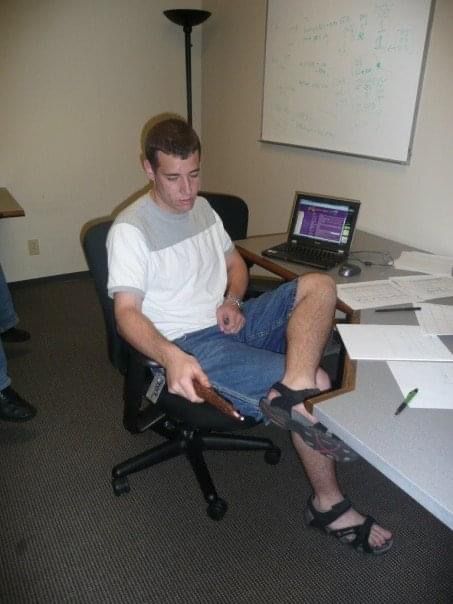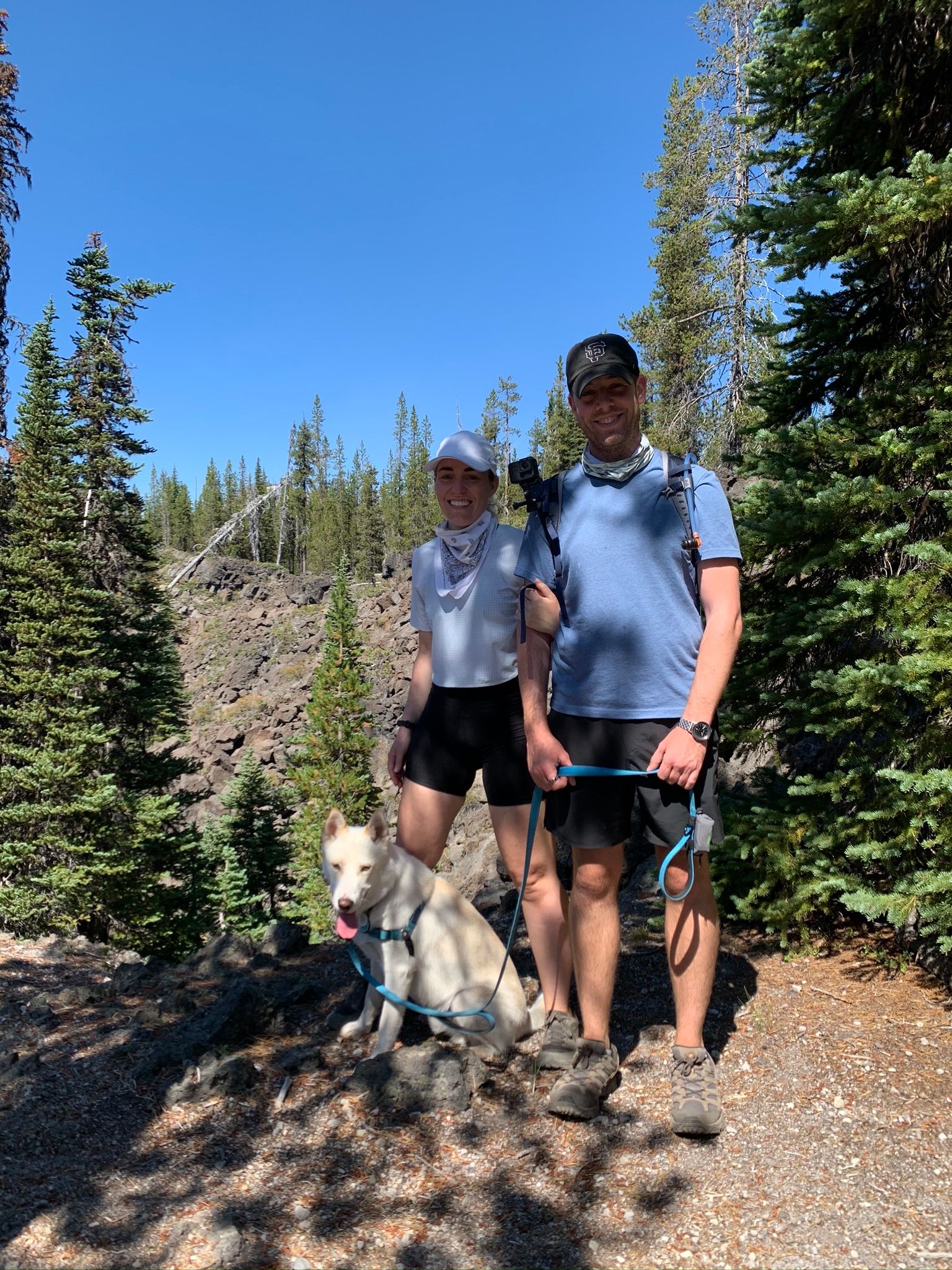Today’s technical leaders need to have a certain depth of understanding of concepts to be able to help their teams, only then can they earn their respect, believes Cosmin Nicolaescu, Chief Technical Officer (CTO) of San Francisco-based fintech startup Brex.
Over the last decade, Cosmin, or Cos, has helped build cloud systems for Microsoft, and financial infrastructure systems for Stripe, another San Francisco-based fintech startup. Though he may not code regularly anymore, his journey into the world of computers and coding began early on.
Hailing from Romania, Cos’s interest in technology stemmed from his elder brother’s love for computers. “My brother was more into breaking things and putting them back together. I tried by taking things apart, but wasn’t too successful in putting them back together,” he says.

Cos with his father and elder brother
Understanding coding and hacking
While in high school, Cos started taking an interest in coding and programming. He says, “I was spending time at the computer lab and also became a network admin. It was here that I got to see how computers communicate with each other and learnt more about Linux and other tools.”
At the same time, he was also introduced to the world of hacking and learning how to break into systems. “I started thinking more systematically; the computer will do things that you tell it, but you need to tell precisely what it needs to do. I liked both the aspect of building things from scratch and the hacker aspect of it. I was also ahead of everyone at school, and I was able to teach others how to write code,” Cos adds.
In 2001, he spent a year of junior high school in Alabama, US, where he was part of a Computer Olympiad. He noticed that the computer lab had a restrictive software that didn’t let one open too many applications.
“In the first hour, I broke into it. Computers are fascinating to me; you can make it do literally anything you want, better than what you can personally do,” says Cos.

Cos during his high school graduation
Engineering and Microsoft
After high school, Cos joined the computer science programme at Drexel University, Pennsylvania. Here, he worked for the university’s telemarketing department for donations, and later the CS department part-time and looked into network admins, managing tonnes of automation.
While he liked scripting, hacking, and coding, he wasn’t very keen on software engineering. But, he decided to give it a shot and joined Microsoft in 2006 as an intern.
“They asked me what software I use from Microsoft most often, and I said none. I had my own desktop that I built using Linux. Everything else was open-source; I was using Open Office. Nevertheless, they hired me, and I worked on security software for the next six months. I loved working there and building software. Microsoft wasn’t the evil empire that I imagined it to be,” he recalls.
Cos soon started working on a device management-like software that helped remotely-run machines to raise queries, push them, and make it run commands.
He says, “It not only opened up my view of software engineering, but it also had an intersection of resemblance to the problems I was solving as a systems admin. It was security-related, and I was interested in it.”
During his internship at Microsoft, Cos also worked on an active directory. At the same time, the tech giant was looking to migrate to the cloud.
A year later, in 2008, Cos joined the company full-time.

Cosmin's college professors
Building Azure and Office 365
Cos began working on the first version of Microsoft’s cloud computing service — Azure — and built its sign-up flow.
By 2012, he had started working on Office 365 — on the sign-up, provisions, and managing services.
“Everyone knew it had to be built for scale from day one. It had to be fully distributed, have partitioning, and sharding built-in. It made a billion dollars in six months,” says Cos.
In fact, he also helped build the Azure Commerce Platform. His team, which was working out of Shanghai, unified all the payments systems at Microsoft. This also marked Cos’s first foray into the payments segment.
“I got to learn how money moves in the world, all the different payment methods, and how its movement could be a problem. I had never given it a thought, but then I realised the complexity of it,” says Cos.
Soon after, Cos left Microsoft and joined San Francisco-based fintech startup Stripe.

Cos during his internship days at Microsoft
The world of fintech
To join Stripe, Cos moved from Seattle to San Francisco.
At the time, Stripe’s engineering team had close to 40 people. Cos primarily worked on building the core financial infrastructure, which focussed on how the money moved in the system. When Stripe’s first engineer — also the team lead — moved to the startup’s finance team, Cos took on the role of a manager.
“I found that middle management wasn’t my cup of tea, so at Microsoft, I went back to being a technical architect. In Stripe, it was more hands-on. You have autonomy in culture. You build a lot of processes,” Cos claims.
At the time, Stripe was working on making the product accessible for larger customers while its competitors were working on building an omnichannel presence.
“It was complex and required knowledge that we didn't have in terms of hardware and managing devices. For instance, we knew how to build web services, but we did not know how to build embedded software. It was then we took the approach of how we build a platform such that companies on Square can build on top of Stripe,” explain Cos.

Cos during the Stripe days
Building an infrastructure product
Meanwhile, Stripe was also looking at M&A opportunities to augment its talent and expertise and acquired a digital payments company called Index.
This became the foundation for the main financial infrastructure product, where the cloud part was managed by Stripe, and the device part was taken care of by Index. In September 2018, the company was able to start shipping the beta version of the product.
In fact, it also started setting up multiple offices in the US, and also planned on expanding overseas, including Europe, Asia, and South America.
“We wanted to solve the problem of international payment methods. It was challenging to understand different payment methods and systems. We decided to build teams in each of these regions, focussing on making Stripe successful in those areas,” says Cos.
Sometime in late 2017 and early 2018, Cos was helping the founders of Brex — Pedro Franceschi and Henrique Dubugras — to scale their fintech startup.
Cos had two options — either build his own company, or lead an engineering team in a small startup. And, he decided to join Brex.
“The team is ridiculously talented, and just by being in the office, they're reminding me a lot about my early days at Stripe,” he says.
Brex — a San Francisco-based fintech startup — builds corporate credit cards for startups. At present, it has expanded to other verticals, including payments and expense management.

Cos
The Brex journey
Cos joined Brex in December 2018, which already had a huge appeal in terms of its easy sign-up process. There were no personal guarantees, which meant the founders were not personally liable, and the user experience was very simple.
Here, Cos worked on launching an ecommerce product — a cart for ecommerce companies with different palates, schedules, and rewards. He also built a cash product; the beta version was launched in 2019.
While most finance departments heavily rely on manpower to keep all the data in place, Brex started working on a fully-integrated financial product.
Along with his team, he also built the operating system that would have a single system with the right integrations, and APIs that could integrate with third parties associated with Brex.
The team did this with the expense management of the company. People could take a screenshot or a photo of a receipt, and match it to make payments. This soon expanded to vendor payments as well.
“If you think about the cash account, the primary thing that people use is to pay bills, write cheques, or for making wireless card payments. And, we're kind of building all these software products on top of the financial infrastructure,” says Cos.
Owning the financial infrastructure allowed Brex to unify all its products and create a seamless experience. He says "Our goal is to enable small businesses in the US to open up a Brex account — get a credit card and a cash account, which should work well with all the major third-party systems for accounting, and users shouldn't have to worry about anything.”

Cos
Hiring engineers
Today, while hiring engineers, Cos looks for people who fit into Brex’s value system. “I think that's unique to each company; people who were successful in one company may not be successful in another company.”
This, in turn, has motivated people to become ambitious, dream big, be detail-oriented, as well as seek the truth. The team also follows a collaborative mindset. “We have an owners’ mentality,” he adds.
Cos advises people to not rush into management, and first build the right depth of expertise. He explains most techies explore technology through breadth and depth. Citing an example, Cos says, some senior engineers — like staff-level principal engineers — typically go deep on a specific technology.
They are experts in storage or file systems and know that space best. The other set of engineers are people who have expertise in different areas but have enough depth in a particular segment.
“I spent quite a lot of time as an individual contributor. Before moving into management, I spent over six years being an IC, which allowed me to build the right intuition. When I see there's something off, I can go deep and understand what and why it is,” explains Cos.
He adds technical leaders and managers who don’t have the depth also don’t possess the right intuition. "To be able to be a good technical leader, you have to earn the respect of your team. And, you have to be able to have this intuition to know when something is off, or when to nudge on a decision, or so on,” explains Cos.
He advises it is important to keep learning.
“If you do the same thing over and over again, it can get boring. But, at the same time, you want to have enough time and depth in each of these areas; so focus on learning. I've always had a curious nature, wanting to learn how things really work. I think that's been one of the biggest drivers for me. It helps take me out of my comfort zone. If you do that, everything else falls in place. I've never particularly cared about titles; I just primarily focus on what's an interesting problem, and what I'm going to learn from it.”
Edited by Suman Singh and Saheli Sen Gupta
Link : https://yourstory.com/2020/11/microsoft-office365-azure-fintech-startup-brex-cosmin-cto-stripe
Author :- Sindhu Kashyaap ( )
December 01, 2020 at 05:50AM
YourStory






1566210615008.png?fm=png&auto=format&h=100&w=100&crop=entropy&fit=crop)